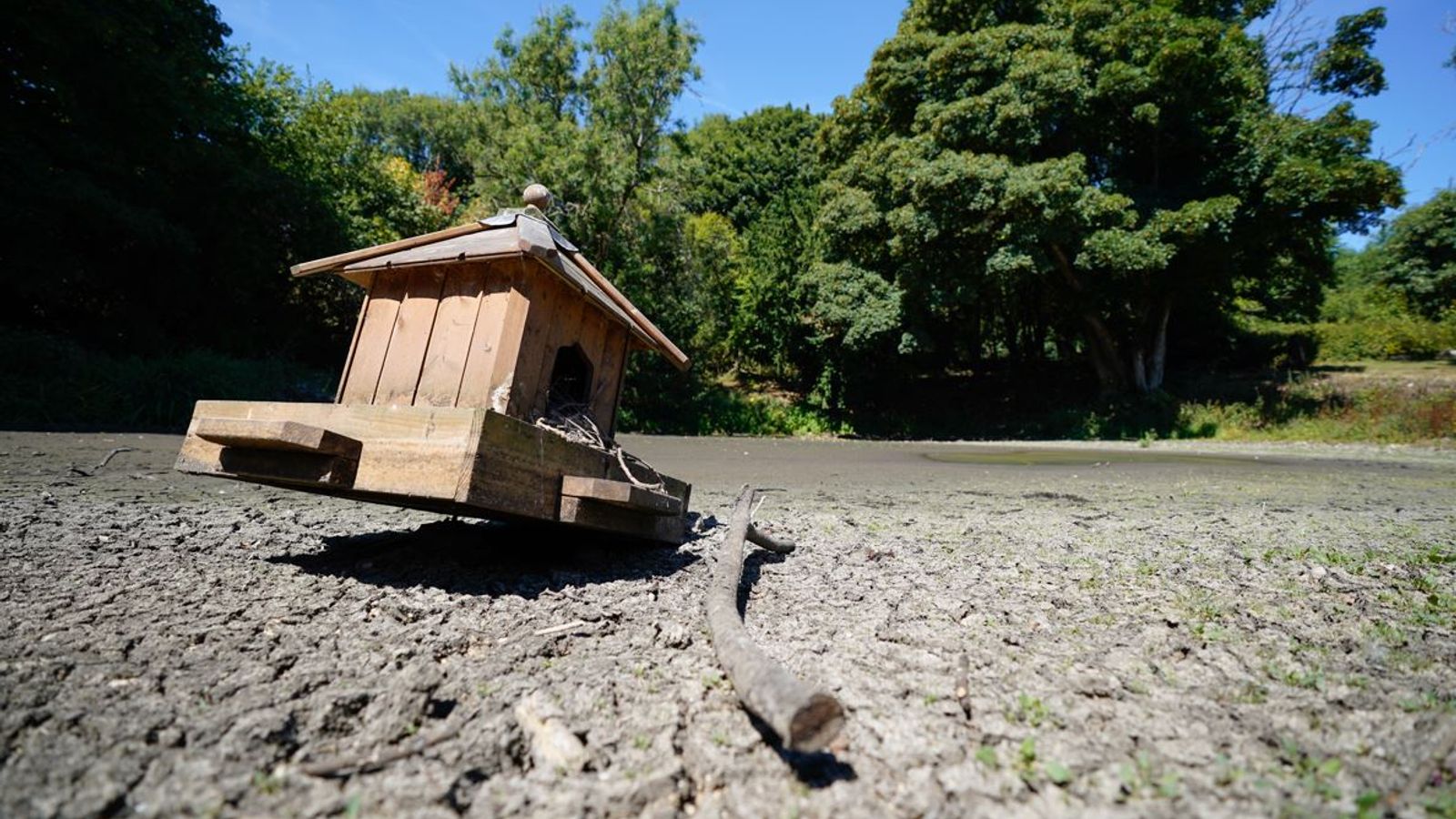A senior Thames Water executive has told Sky News that the company can’t rule out bringing in more restrictions for customers if the UK suffers another dry winter.
The firm signalled on Tuesday it will introduce a hosepipe ban in the coming weeks as the hot, parched summer continues to take its toll.
South East, Southern and Welsh Water have also announced such bans for customers in areas they supply.
The driest first seven months of the year for decades and hot spells have left parts of the UK facing looming drought.
And water companies are being urged by the government to protect essential supplies heading into a “likely very dry autumn”.
Tanker and water bottles deployed as village runs dry – weather live updates
Cathryn Ross, Thames Water’s director of strategy and external affairs, said: “The forecast does show little or no rain for the foreseeable future and that’s not a good position.”
Hosepipe bans: What are the rules, what are the exemptions and what do they mean?
Hampshire residents feeling brunt of tinder-dry heatwave conditions
Thames Water to introduce hosepipe ban as another heatwave looms
The medium to long-term forecast is also dry, and she said she hoped customers “will respond to the request to use water wisely”.
Ms Ross said of the dry conditions: “This is unprecedented circumstance. We have all been living through this incredible hot weather through July.”
Thames Water supplies 15 million customers across London and the Thames Valley.
Ms Ross continued: “We rely on rivers and groundwater for most of our water. And we rely on rainfall in the spring and in the winter and autumn to replenish that.
“If we go through another dry winter we are going to see a prolonged period of water shortage and the drought is going to go on.
“What we are hoping is that our customers will respond to the request to use water wisely, they will do what we’re asking them to do by not using hosepipes, and that will mean that we can conserve those water stocks so we can get through even a dry winter without having to ramp-up restrictions.
“But we really can’t rule that out. We don’t know exactly how our customers will respond.”
Read more: What are the rules on hosepipe bans, what are the exemptions and what do they mean?
Analysis from the UK Centre for Ecology and Hydrology (UKCEH) has warned that low or even exceptionally low river flows and groundwater levels are likely to continue for the next three months in southern England and Wales.
More than three inches of extra rain, in addition to what would normally be expected, is needed to overcome the dry conditions in parts of southern England, but there is no immediate sign of rain in the forecast.
Environment Secretary George Eustice has met water company bosses, who he said assured him that water supplies remained resilient across the country.
“Each company has a pre-agreed drought plan which they are following, and I have urged them to take any precautionary steps needed to protect essential supplies as we go into a likely very dry autumn,” he said.
Water companies have also been under fire for bringing in hosepipe bans while leaking billions of litres of water a day from their networks and awarding high bonuses to executives.
Thames Water loses about a quarter of its supply through ageing pipes and Ms Ross admitted the firm “haven’t got a great record on fixing leaks” but they are “prioritising leakage”.
She said it has cut leaks by 10% in the last three years and aims to reduce them by 20% over a five-year period.
Ms Ross said the company is fixing nearly 1,100 leaks a week and has 300 people working around the clock to find leaks.
She added: “In dry weather, ground dries out and pipes crack. We’re having to run to stand still.”
Meanwhile, Thames Water brought in bottled water for residents in the village of Northend in Oxfordshire and pumped water into the network, after supplies were hit by what it said was a technical issue at Stokenchurch Reservoir.
The firm later said it “improved the situation” and all customers in the nearby area should now have water, but it warned pressure could be lower than normal.





